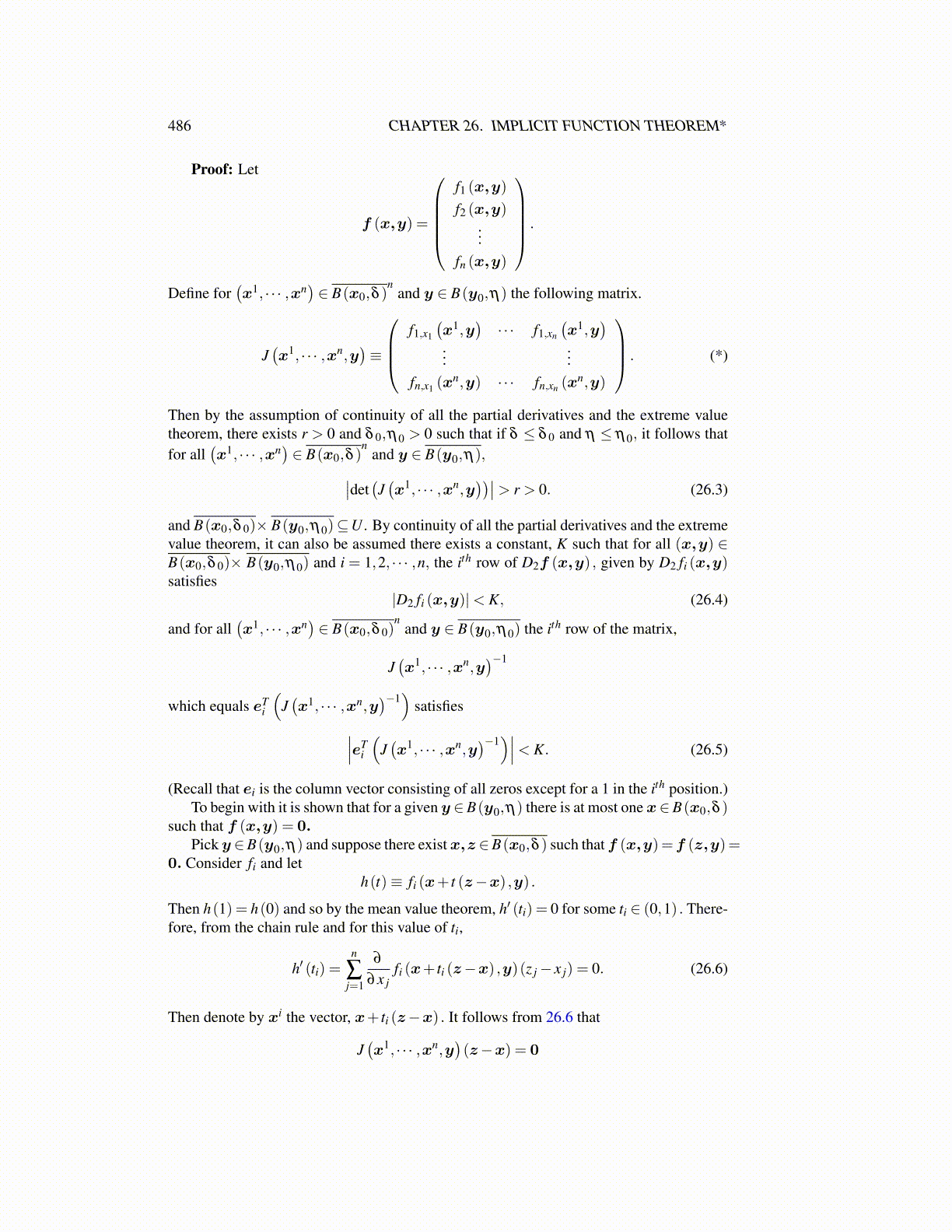
486 CHAPTER 26. IMPLICIT FUNCTION THEOREM*
Proof: Let
f (x,y) =
f1 (x,y)
f2 (x,y)...
fn (x,y)
.
Define for(x1, · · · ,xn
)∈ B(x0,δ )
nand y ∈ B(y0,η) the following matrix.
J(x1, · · · ,xn,y
)≡
f1,x1
(x1,y
)· · · f1,xn
(x1,y
)...
...fn,x1 (x
n,y) · · · fn,xn (xn,y)
. (*)
Then by the assumption of continuity of all the partial derivatives and the extreme valuetheorem, there exists r > 0 and δ 0,η0 > 0 such that if δ ≤ δ 0 and η ≤ η0, it follows thatfor all
(x1, · · · ,xn
)∈ B(x0,δ )
nand y ∈ B(y0,η),∣∣det(J(x1, · · · ,xn,y
))∣∣> r > 0. (26.3)
and B(x0,δ 0)× B(y0,η0)⊆U . By continuity of all the partial derivatives and the extremevalue theorem, it can also be assumed there exists a constant, K such that for all (x,y) ∈B(x0,δ 0)× B(y0,η0) and i = 1,2, · · · ,n, the ith row of D2f (x,y) , given by D2 fi (x,y)satisfies
|D2 fi (x,y)|< K, (26.4)
and for all(x1, · · · ,xn
)∈ B(x0,δ 0)
nand y ∈ B(y0,η0) the ith row of the matrix,
J(x1, · · · ,xn,y
)−1
which equals eTi
(J(x1, · · · ,xn,y
)−1)
satisfies∣∣∣eTi
(J(x1, · · · ,xn,y
)−1)∣∣∣< K. (26.5)
(Recall that ei is the column vector consisting of all zeros except for a 1 in the ith position.)To begin with it is shown that for a given y ∈B(y0,η) there is at most one x∈B(x0,δ )
such that f (x,y) = 0.Pick y ∈B(y0,η) and suppose there exist x,z ∈B(x0,δ ) such that f (x,y)=f (z,y)=
0. Consider fi and leth(t)≡ fi (x+ t (z−x) ,y) .
Then h(1) = h(0) and so by the mean value theorem, h′ (ti) = 0 for some ti ∈ (0,1) . There-fore, from the chain rule and for this value of ti,
h′ (ti) =n
∑j=1
∂
∂x jfi (x+ ti (z−x) ,y)(z j− x j) = 0. (26.6)
Then denote by xi the vector, x+ ti (z−x) . It follows from 26.6 that
J(x1, · · · ,xn,y
)(z−x) = 0